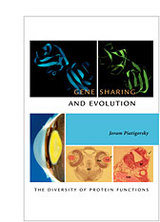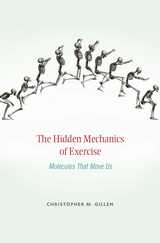
"Gene sharing" means that the different functions of a protein may share the same gene--that is, a protein produced by a gene evolved to fulfill a specialized function for one biological role may also perform alternate functions for other biological roles.
In the 1980s and early 1990s, Joram Piatigorsky and colleagues coined the term "gene sharing" to describe the use of multifunctional proteins as crystallins in the eye lens. In Gene Sharing and Evolution Piatigorsky explores the generality and implications of gene sharing throughout evolution and argues that most if not all proteins perform a variety of functions in the same and in different species, and that this is a fundamental necessity for evolution.
How is a gene identified, by its structure or its function? Do the boundaries of a gene include its regulatory elements? What is the influence of gene expression on natural selection of protein functions, and how is variation in gene expression selected in evolution? These are neither new nor resolved questions. Piatigorsky shows us that the extensiveness of gene sharing and protein multifunctionality offers a way of responding to these questions that sheds light on the complex interrelationships among genes, proteins, and evolution.

David Nathan was stunned when he first saw Dayem Saif at Children's Hospital in Boston in September 1968. Dayem was then a six-year-old with the stature of an average-sized boy of two. He wore baby shoes on his tiny feet and was unable to walk without holding his mother's hand. His color was dark yet pasty and his face horribly misshapen. The child was being ravaged by thalassemia, a life-threatening inherited disease of the blood, and one of the leading causes of disfigurement, disability, and death in children worldwide. Without effective treatment, Dayem would almost certainly die before his twentieth birthday.
Genes, Blood, and Courage is David Nathan's absorbing story of the thirty-year struggle to keep Dayem alive. "Immortal Sword" is the English translation of Dayem's Arabic name, and under Nathan's care Dayem, indeed, seems immortal. Despite his continual reluctance to follow his doctor's orders and the repeated hospitalizations that result, Dayem--the misshapen, stunted boy--survives to become a handsome, successful businessman.
In Genes, Blood, and Courage Nathan goes beyond his struggles with this seemingly immortal patient to describe in detail the emergence, over the past twenty-five years, of an entirely new force in medical care called molecular medicine. As Dayem's case illustrates, this new area of human genetic research--in which Nathan is a leading clinical investigator--promises tremendous advances in the rational diagnosis, prevention, and treatment of inherited disorders, such as thalassemia and sickle cell anemia, and even of acquired illnesses such as cancer and infectious disease.
Genes, Blood, and Courage is a celebration not just of Dayem's triumphs but also of the tremendous accomplishments and potential of the American biomedical research enterprise in the late twentieth century.

As anyone who takes up a new sport quickly discovers, even basic athletic moves require high levels of coordination and control. Whether dribbling a basketball or hitting a backhand, limbs must be synchronized and bodies balanced, all with precise timing. But no matter how diligently we watch the pros or practice ourselves, the body’s inner workings remain invisible.
The Hidden Mechanics of Exercise reveals the microworld of the human body in motion, from the motor proteins that produce force, to the signaling molecules that activate muscles, to the enzymes that extract energy from nutrients. Christopher Gillen describes how biomolecules such as myosin, collagen, hemoglobin, and creatine kinase power our athletic movements. During exercise, these molecules dynamically morph into different shapes, causing muscles, tendons, blood, and other tissues to perform their vital functions. Gillen explores a wide array of topics, from how genetic testing may soon help athletes train more effectively, to how physiological differences between women and men influence nutrition. The Hidden Mechanics of Exercise tackles questions athletes routinely ask. What should we ingest before and during a race? How does a hard workout trigger changes in our muscles? Why does exercise make us feel good?
Athletes need not become biologists to race in a triathlon or carve turns on a snowboard. But Gillen, who has run ten ultramarathons, points out that athletes wishing to improve their performance will profit from a deeper understanding of the body’s molecular mechanisms.
READERS
Browse our collection.
PUBLISHERS
See BiblioVault's publisher services.
STUDENT SERVICES
Files for college accessibility offices.
UChicago Accessibility Resources
home | accessibility | search | about | contact us
BiblioVault ® 2001 - 2024
The University of Chicago Press









